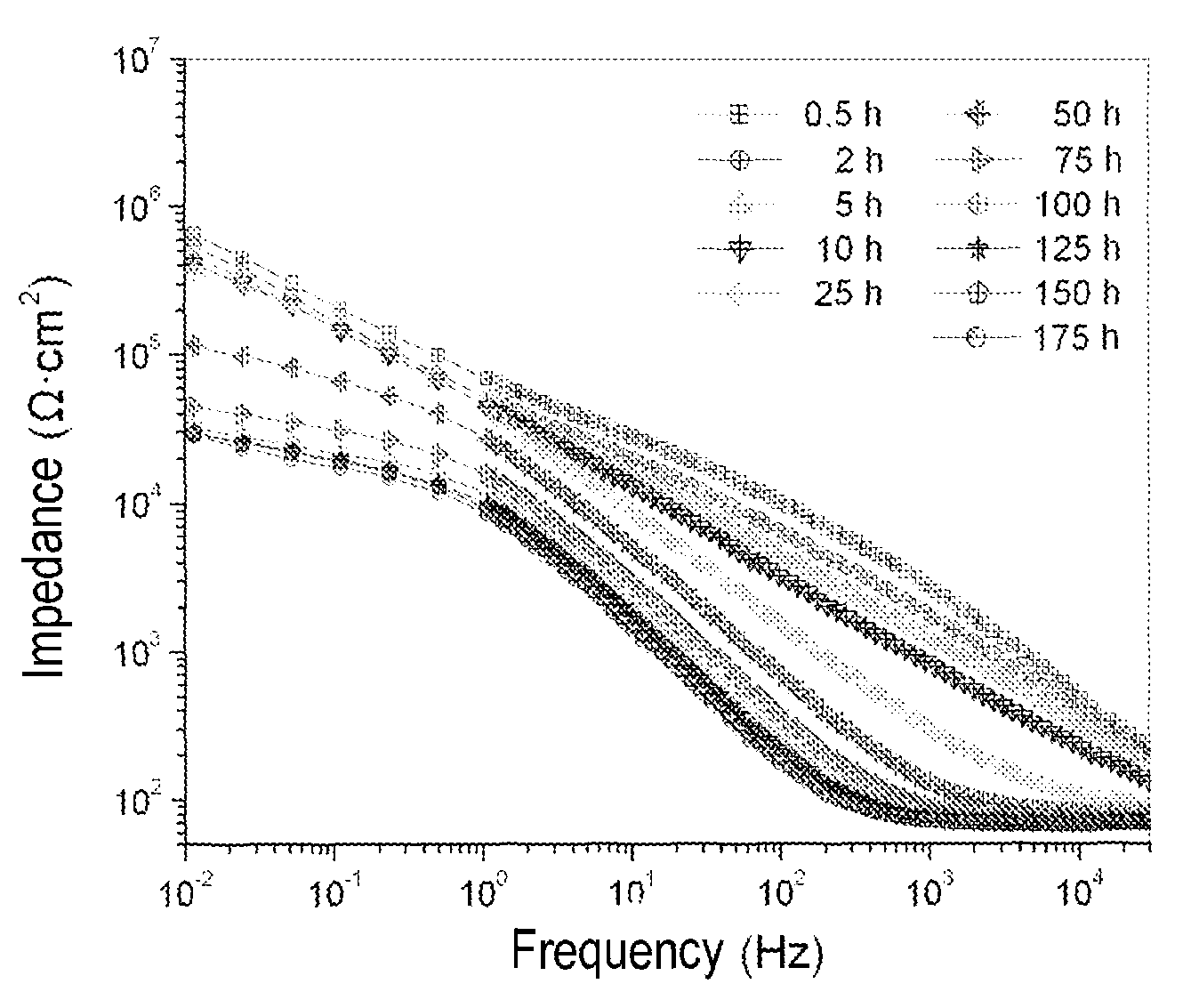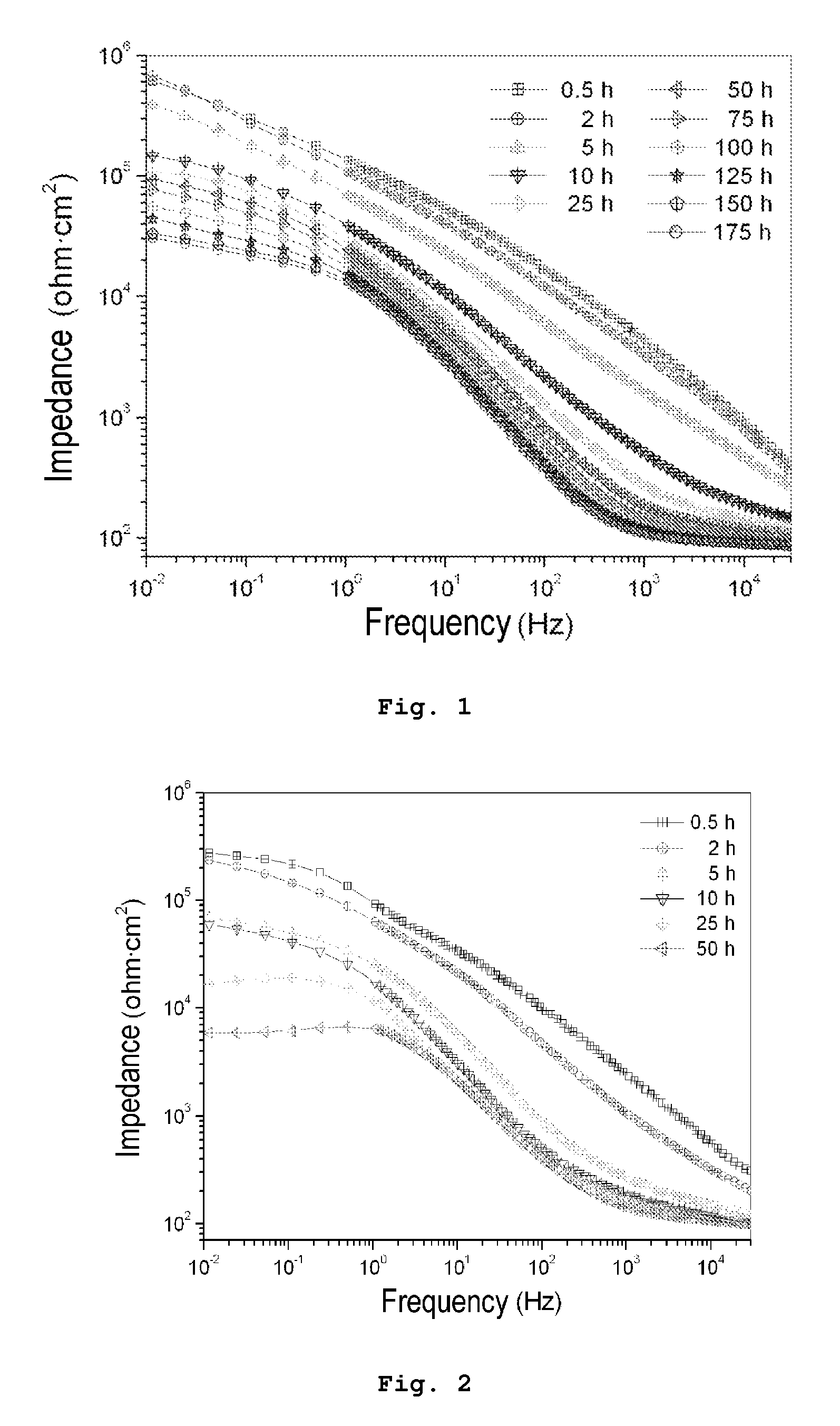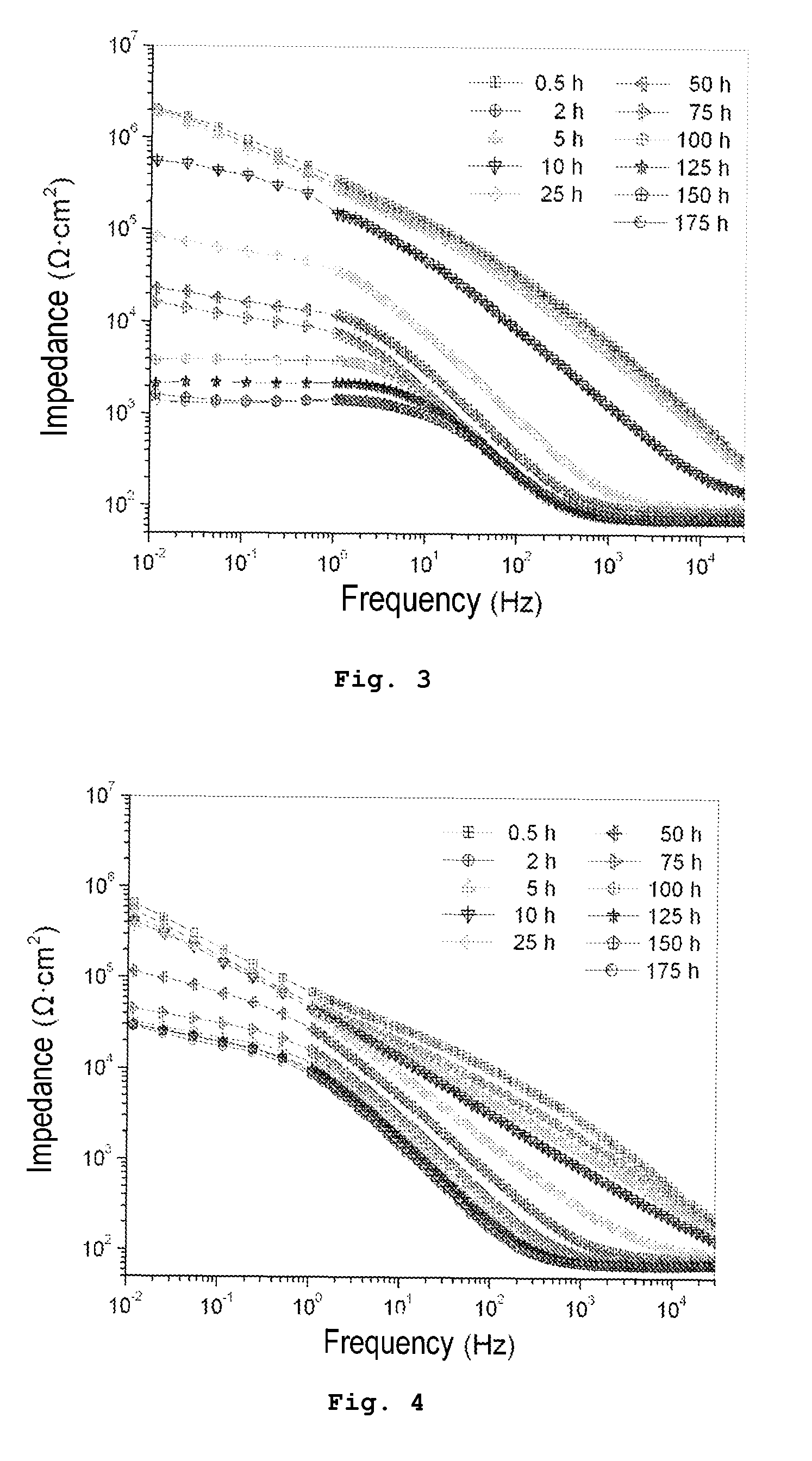Process for producing a coating on the surface of a substrate based on lightweight metals by plasma-electrolytic oxidation
a technology of lightweight metals and plasma, applied in coatings, cell components, printing, etc., can solve problems such as voltage and discharge increase, and achieve the effect of improving corrosion protection
- Summary
- Abstract
- Description
- Claims
- Application Information
AI Technical Summary
Benefits of technology
Problems solved by technology
Method used
Image
Examples
example 1
PEO Coating Produced Using a Phosphate-Based Electrolyte
[0036]The scanning electromicrographs show that the surface of the test specimen produced by means of PEO using a phosphate-based electrolyte (without clay particles) has micropores having a diameter of 10-30 μm. The pore-free region is, on the other hand, smooth. Many small particles were observed on the surface of the test specimen produced by means of PEO using a phosphate-based electrolyte containing 10 g / l of clay particles; the surface was rough. The size of the small particles varied from a few hundred nm to some mm. Images of the cross section showed that the thickness (20 μm±2 μm) of the coating produced using clay particles was smaller than the thickness (25 μm±2 μm) of the coating produced without clay particles. Many more pores were also observed in the coating produced using clay particles.
[0037]A further interesting result is that the hydrophilicity of the two PEO-coated test specimens is different. The test speci...
example 2
PEO Coating Produced Using Silicate-Based Electrolyte
[0041]The scanning electromicrographs show that the surface of the test specimen produced by means of PEO using a silicate-based electrolyte (without clay particles) has a larger number of micropores having a diameter of 5-15 μm. The pore-free region, on the other hand, is smooth without any heterogeneous particles. Many small particles were observed on the surface of the test specimen produced by means of PEO using a silicate-based electrolyte containing 10 g / l of clay particles. Micrographs of the cross section showed that the thickness of the coating produced with clay particles and the coating produced without clay particles were about the same (17 μm±3 μm). Many more pores were also observed in the coating produced with clay particles.
[0042]As in example 1, it is found the hydrophilicity of the two PEO-coated test specimens is different. The test specimen produced by means of PEO using a silicate-based electrolyte without cla...
PUM
| Property | Measurement | Unit |
|---|---|---|
| size | aaaaa | aaaaa |
| size | aaaaa | aaaaa |
| size | aaaaa | aaaaa |
Abstract
Description
Claims
Application Information
 Login to View More
Login to View More - R&D
- Intellectual Property
- Life Sciences
- Materials
- Tech Scout
- Unparalleled Data Quality
- Higher Quality Content
- 60% Fewer Hallucinations
Browse by: Latest US Patents, China's latest patents, Technical Efficacy Thesaurus, Application Domain, Technology Topic, Popular Technical Reports.
© 2025 PatSnap. All rights reserved.Legal|Privacy policy|Modern Slavery Act Transparency Statement|Sitemap|About US| Contact US: help@patsnap.com



